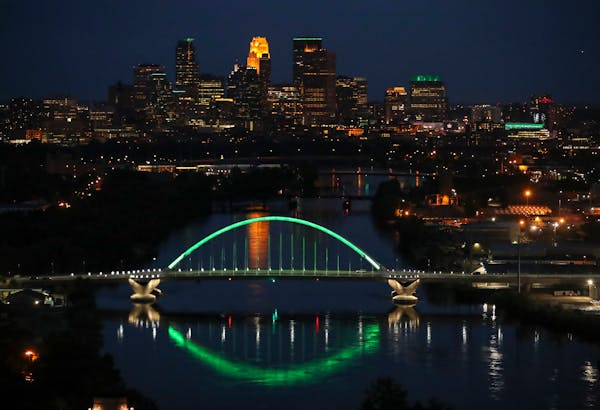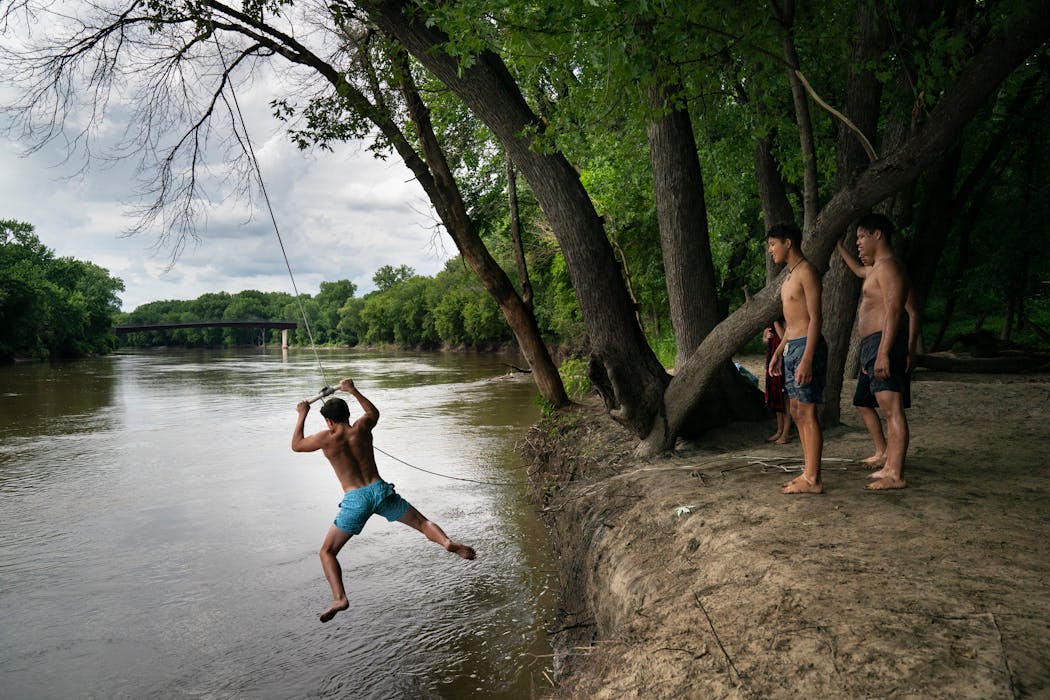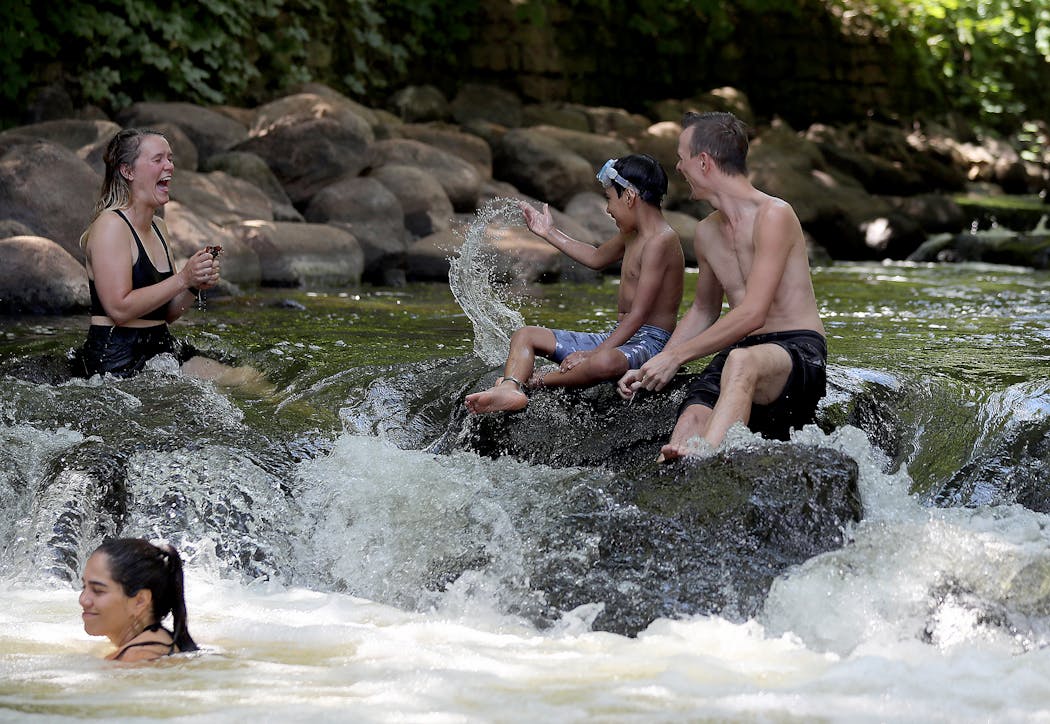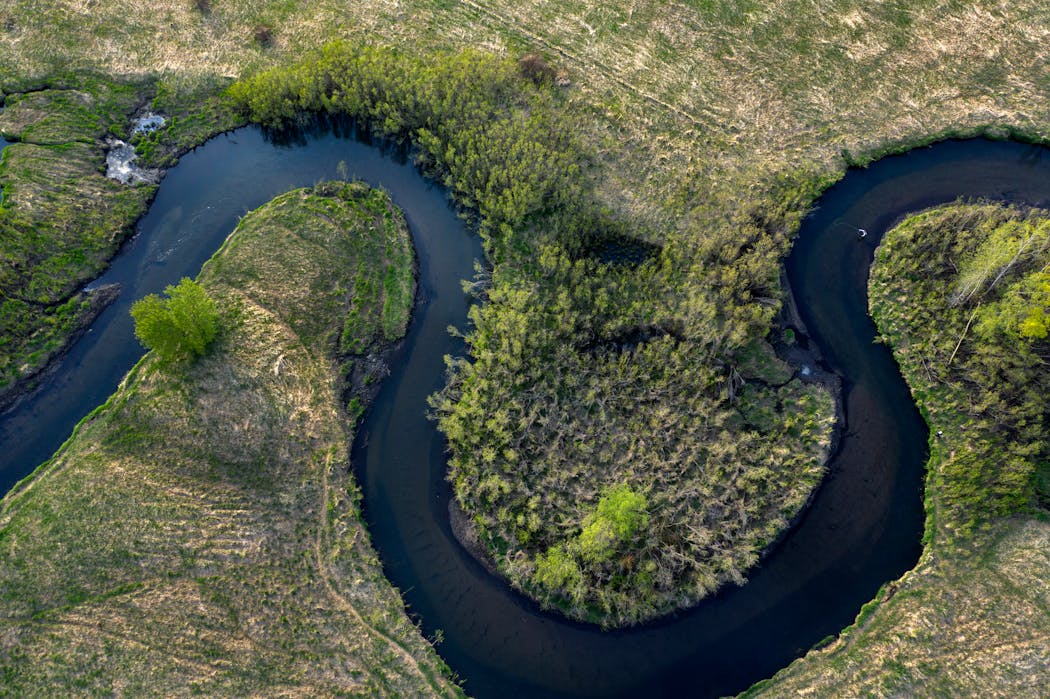Is it safe to swim in Twin Cities rivers, or are they all too polluted?
Listen and subscribe to our podcast: Via Apple Podcasts | Spotify | Stitcher
The Twin Cities metro area is home to a network of about 100 rivers, streams and creeks. The largest of them, the mighty Mississippi River, bisects the urban core.
Reader Rajan Vatassery, a St. Paul engineer and father of two, said he was considering taking his children for a river dip and wondered whether the area's rivers were all too polluted. He posed the question to Curious Minnesota, the Star Tribune's community reporting project tackling excellent reader questions like Vatassery's.
It turns out the water quality of many metro rivers and streams is actually good enough for a swim or wading, even though many have high levels of bacteria, according to the Minnesota Pollution Control Agency (MPCA).
About 40% of the river and stream miles in the metro area are deemed "impaired" for recreational use due to excess bacteria, said Miranda Nichols, the MPCA's Impaired Waters list coordinator. One of the most common types of illnesses from swallowing the contaminated water is diarrhea.
The No. 1 source of that bacteria is feces. The agency used to flag local rivers for the presence of fecal coliform, generally. It now tracks a specific type, E. coli, which Nichols said is a better indicator of the pathogens that could sicken humans.
Human waste isn't the issue, however. The water flushed down the toilet in the metro area lands at wastewater treatment plants, Nichols explained, and bacteria is easy to treat. The treatment plants do an excellent job of removing it before they discharge water back into the environment, she said.
The bacteria fouling metro rivers and streams mainly comes from animal waste. It is from pet waste in law runoff, for example, and from wildlife such as geese waddling nearby. "Anything that ends up in the storm drain shoots right down to the river," Nichols said.
The swimming impairments do not mean you cannot enter those stretches or that you will fall seriously ill, Nichols said. It means precautions are required.
"For most wading and boating you're going to be OK," Nichols said. "Try not to ingest the water. Watch that children don't put fingers in their mouths."
A quick shower before and after swimming is also recommended. She also advised people to generally stay out of rivers and streams right after a rain, since it flushes contaminants into the water.
"Just stay out for a day if you just want to be safe," she said.
Popular swimming spots
A couple of cold streams in the metro area are particularly popular for swimming, she said: Browns Creek north of Stillwater and the Vermillion River in Hastings.
"You'll see people hopping in there because it so cold," she said. "I love swimming in the Vermillion."
Paige Marschall, recreation program specialist with Hastings Park and Recreation, said people often splash in the river near Vermillion Falls Park and Old Mill Park — although there is no designated swim area.
"It is popular, definitely with teens," Marschall said.
Marschall said Rapid Riders, a nonprofit group of white-water canoeing and kayaking enthusiasts, does a great job with its annual river cleanups in Hastings. They fish out bikes, tires and even propane tanks.
Other river swimming favorites are Eagle Creek in Scott County and Trout Brook in Washington County, Nichols said.
Note that MPCA data shows some segments of Eagle Creek, Trout Brook, Browns Creek and the Vermillion River are impaired for bacteria.
Other hazards
There are other safety considerations for taking a dip in the rivers besides pollution.
Most rivers and streams don't have designated beaches or a lifeguard patrolling. For example, there are three main streams in Ramsey County — Battle Creek, Rice Creek and Trout Brook. None have designated swim areas, according to Ramsey County Parks & Recreation. People using non-designated swim areas "do so at their own risk," said county spokesman John Siqveland.
Minneapolis doesn't have any designated swim areas on rivers and streams either, including the Mississippi.
"We really encourage people to use our beaches, water parks, natural swim areas and any of the dozen wading pools," said Dawn Sommers, spokeswoman for the Minneapolis Park & Recreation Board.
And file this to the killjoy folder: a Park Board ordinance prohibits swimming or bathing in any unauthorized beach or park water. The latter it seems would apply to rivers and streams, Sommers said. The ordinance would apply to people swimming in the Mississippi from parkland shore, too, but Sommers wasn't sure the Park Board can regulate people swimming from a boat — particularly given the other jurisdictions involved.
Not that anyone is really looking.
"We don't have the resources," Sommers said.
Finally, the fact that humans can dabble in most of the rivers doesn't mean the waterways are healthy for fish or insects or the overall ecosystem. The waterways are stressed by human development and all that comes with it.
The Mississippi River in the Twin Cities area, for example, does not meet standards for sediment, bacteria, phosphorus, aluminum, mercury, PCBs and the "forever chemicals" called PFAS, according to Nichols. The contaminants threaten fish, bugs and other aquatic life. The mercury and PCB levels make fish unsafe to eat in larger quantities.
The Mississippi is better than it used to be, but it's in need of repair, said Trevor Russell, water program director for Friends of the Mississippi: "Solving these problems required decisive public action before they move beyond our reach."
Nichols put it this way: "It's sick, but it's not on life support."
Rajan Vatassery said the rivers are more approachable than he thought.
"It's great to hear that you can actually swim in most of them," Vatassery said. "I thought it would be a 'no fishing, no swimming' kind of thing."
If you'd like to submit a Curious Minnesota question, fill out the form below:
Read more Curious Minnesota stories:
Where happens to the sewage in Hennepin County? Where is it treated and where does it end up?
How do cities make Mississippi River water safe to drink?
Why do inland cities like St. Paul have so many seagulls?
When did wild bison disappear from Minnesota?
Why do wild turkeys seem to thrive in the Twin Cities?
Why do coyotes always howl when trains go by?






